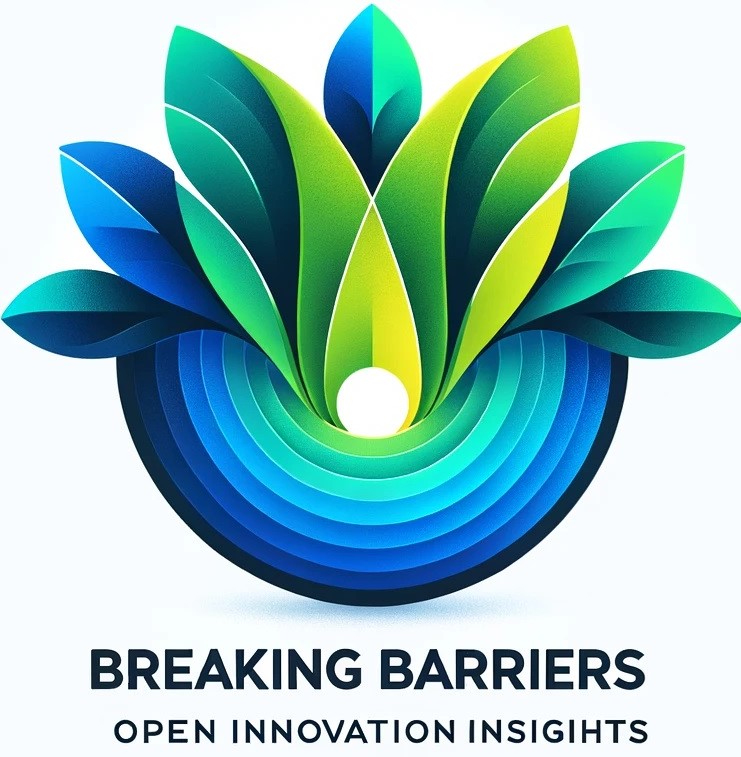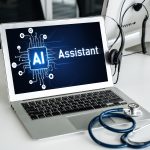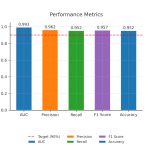
Healthcare’s AI crisis isn’t what you think. While the pandemic unleashed hundreds of COVID-19 prediction models promising diagnostic breakthroughs, zero reached successful clinical deployment. A 2020 BMJ systematic review examined 232 COVID-19 AI algorithms—not one proved fit for bedside use. Nature +3 This catastrophic failure reveals a fundamental truth: AI readiness has nothing to do with algorithm availability.
The problem isn’t technological capability—it’s operational preparedness. 85% of healthcare AI projects fail, not from poor algorithms but from workflow fragmentation, infrastructure gaps, and governance voids. Orion Health +2 Epic’s widely deployed sepsis model missed 67% of actual sepsis cases while alerting on 18% of all hospitalized patients. Axios +3 IBM Watson Health, after $5 billion in investment, sold for $1 billion—an 80% loss. SlateNelson Advisors Blog These failures share common roots: algorithms built in sterile research environments crumble against messy clinical reality. PubMed Central
What healthcare needs isn’t better models. It needs infrastructure for model operationalization—the connective tissue between algorithms and actionable care. Three fundamental gaps block AI’s clinical potential: cultural inertia against black-box systems, leadership unable to validate or govern AI, and workflows architecturally incompatible with algorithmic decision support. PubMed Central +2 Closing these gaps requires innovations healthcare hasn’t yet imagined. This article presents seven radical approaches to build genuinely AI-ready clinical workflows, grounded in evidence from recent regulatory developments, implementation science, and frontier health system innovations.
The readiness paradox – When infrastructure matters more than intelligence
COVID-19 AI failures stemmed from predictable patterns. Derek Driggs, lead author of a Nature Machine Intelligence review, found models trained on “Frankenstein datasets”—16 papers used pediatric chest X-rays as COVID-19 controls, teaching algorithms to identify children versus adults rather than disease. Others learned hospital fonts, patient positioning, and equipment type instead of pathology. Naturenature The Kermany pediatric dataset, scraped from Kaggle, appeared in multiple studies as COVID-19 training data despite containing only 1-5 year-olds. Naturenature
But data quality, while critical, wasn’t the primary deployment barrier. Workflow integration emerged as the top obstacle in a 2024 survey of 43 U.S. health systems—surpassing safety concerns, financial constraints, and regulatory uncertainty. PubMed Central Most radiology PACS systems can’t display AI outputs. Hospitals lack GPU infrastructure. EHR systems weren’t designed for real-time algorithmic feeds. Oatmeal Health The infrastructure layer between algorithms and clinical workflows simply doesn’t exist at scale. Brookings
Cultural resistance compounds technical barriers. Clinicians distrust black boxes contradicting medical training. jmir +2 Old habits persist: dichotomized temperature checks (fever/no fever) when AI offers probabilistic risk scores; manual forms when structured data capture would feed algorithms; override rates of 90-96% for AI alerts. Physicians receive 100-200 alerts daily, creating alert fatigue that renders even accurate AI clinically useless. Axiosjmir Only 16% of providers find ML-based sepsis systems helpful. Influx MD
Leadership gaps prevent organizations from addressing these challenges. Few executives understand model validation beyond accuracy metrics. Bias auditing remains rare—Epic’s sepsis model used marital status and ethnicity documentation as variables yet was never audited for demographic bias. Oatmeal Health +3 Continuous monitoring requirements exist in FDA HTI-1 regulations (effective March 2024) Healthcare IT News and the EU AI Act (entered force August 2024), but most hospitals lack systems to track model drift, subgroup performance degradation, or concept shifts in evolving patient populations.
Innovation opportunity 1 – Model middleware as healthcare’s missing layer
Healthcare needs an AI-Ready Workflow Layer—middleware sitting between EHR systems and algorithms, translating clinical data into model-ready formats and algorithmic outputs into workflow-native actions. Think of it as healthcare’s API economy, but for intelligence.
Current reality requires custom integration for every AI tool. Each algorithm needs bespoke data pipelines, unique output formats, and manual workflow retrofitting. This approach doesn’t scale. jmir What’s needed: standardized model orchestration platforms that abstract away integration complexity.
This middleware would handle critical functions: real-time FHIR data extraction and normalization, model version management and A/B testing, explainability layer generation, output translation into clinical workflows (automatic order entry, smart charting, priority queueing), performance monitoring dashboards, and automated bias detection across patient subgroups.
Early examples exist. Cloud providers now offer healthcare-specific AI infrastructure—AWS HealthLake, Google Healthcare API, Azure Health Data Services—but these remain developer-focused tools, not clinician-facing orchestration platforms. Amazon Web Services +2 The next generation must enable “plug-and-play” AI deployment: hospital purchases algorithm, middleware handles FHIR integration, outputs appear in existing workflows within days, not months.
The business model shifts from custom implementation services to platform subscription. Vendors focus on algorithm performance; middleware handles operationalization. Hospitals gain vendor-agnostic infrastructure supporting multiple AI tools without per-algorithm integration projects. FDA HTI-1’s Decision Support Intervention requirements (mandatory January 2025) push toward this model by requiring algorithm transparency and standardized documentation—making middleware-based orchestration increasingly viable. Healthcare IT Newshealthit
Innovation opportunity 2 – Digital twin environments for risk-free validation
Healthcare’s validation crisis stems from testing AI in production. Hospitals become unwitting beta testers on live patients. jmir The solution: clinical digital twins—simulation environments replicating hospital workflows, patient populations, and edge cases before algorithms touch real patients.
Digital twins aren’t just synthetic data. They’re complete operational replicas: virtual ICUs with realistic patient trajectories, staffing patterns, equipment constraints, and clinical decision-making. NatureMayo Clinic Platform Algorithms run in parallel with historical cases, revealing failure modes invisible in controlled studies. nature
UC San Diego Health’s sepsis prediction algorithm—achieving 17% reduction in emergency department sepsis deaths—underwent extensive validation in simulated environments before deployment. HealthTech The team tested edge cases: atypical presentations, rare comorbidities, demographic variations, technical failures. This revealed the algorithm struggled with certain presentations, prompting retraining before clinical use.
Digital twins enable “what-if” scenario planning. How does the algorithm perform during flu season when patient mix shifts? What happens if 30% of data elements are missing? How do false positives impact workflow when nurse staffing drops 20%? PubMed Central These questions can’t be answered ethically in production but are critical for operational readiness.
The technology exists. Hospital command centers already use predictive analytics for capacity planning. Expanding these systems to include AI validation requires three additions: historical data replay capabilities with realistic noise and missingness, workflow simulation including human decision-making patterns, and automated bias and drift detection across scenarios.
Leading health systems should build shared digital twin infrastructure—open-source platforms where any hospital can validate AI against realistic clinical scenarios. This democratizes validation, preventing small hospitals from deploying poorly-tested algorithms while enabling vendors to stress-test tools before market release.
Innovation opportunity 3 – Embedded “AI-in-workflow” education at the point of care
Current AI training follows the CME model: attend course, receive certificate, return to practice unchanged. This fails because AI literacy requires continuous contextual learning—education embedded within actual AI encounters. The LancetPubMed Central
Harvard Medical School’s 8-week AI implementation program and Stanford’s specialization provide foundations, but real competency develops through repeated interaction with AI outputs. The innovation: just-in-time learning modules triggered by AI encounters.
When a physician receives an AI-generated sepsis alert, the system offers a 60-second microlearning module: “Why this alert? The model detected subtle lactate trends and vital sign patterns. Research shows this pattern precedes sepsis 68% of the time. Your clinical judgment determines action.” Over time, clinicians develop intuition for when AI adds value versus noise.
This approach mirrors aviation’s recurrent training model. Pilots don’t attend annual safety seminars—they practice scenarios in simulators continuously. Healthcare should adopt similar paradigms: monthly AI-in-workflow simulation sessions where clinicians practice with algorithms in safe environments, debrief decisions, and understand model reasoning.
UMC Utrecht’s ADAM program demonstrates this principle. They provide partial dispensation from clinical duties for physicians participating in AI projects, creating protected time for learning. They hold weekly cross-team meetings where clinicians share AI experiences, building collective intelligence about when models help versus hinder. PubMed Central
Educational content should be stratified. The eClinicalMedicine 2024 framework identifies three tiers: basic skills (understanding AI capabilities and limitations), proficient skills (interpretability and critical appraisal), and expert skills (technical training for dual competency). Not every clinician needs coding skills, but all need bias recognition and explainability assessment. The LancetPubMed Central
Implementation requires EHR vendors building learning modules directly into clinical systems. Epic, Cerner, and MEDITECH should partner with academic medical centers to create embedded curricula. The FDA’s requirement for Decision Support Intervention transparency (HTI-1) provides regulatory push—if systems must explain algorithmic reasoning, this explanation becomes an educational opportunity. Healthcare IT Newshealthit
Innovation opportunity 4 – Clinical-AI co-pilot programs that merge expertise
The collaboration failure killed COVID-19 AI. Researchers lacked medical expertise to spot data flaws; clinicians lacked statistical skills to compensate. Nature The solution: formal Clinical-AI Co-Pilot Programs with joint accountability.
UMC Utrecht’s model works: clinician serves as product owner with data scientist as technical co-lead. They attend each other’s meetings—data scientist joins clinical rounds, clinician attends algorithm reviews. This isn’t liaison work; it’s genuine co-creation. PubMed Central
Mount Sinai embeds data scientists within clinical departments, not isolated in analytics cores. Their malnutrition identification ML engine won the 2024 Hearst Health Prize because data scientists worked directly with bedside nurses, understanding real workflow constraints. Mountsinai They built alerts fitting existing nutrition workflows rather than requiring new processes.
Co-pilot programs require structural changes. Hospitals must create joint positions: 50% clinical time, 50% data science work. These hybrids translate between worlds, spotting issues invisible to pure technologists or pure clinicians. Mass General Brigham’s imaging AI governance committee follows this model—co-chaired by radiologists and data scientists, reviewing every AI tool against clinical and technical criteria. Mass General Advances in Motion
The MIT Critical Data Collaborative pioneered this approach with MIMIC databases, co-locating ICU physician Leo Anthony Celi with research teams. Result: 15,000+ global users accessing properly designed critical care datasets. MIT Open Learning Library Success came from clinical insight shaping data collection from inception.
Hiring strategies must shift. Recruit clinicians interested in informatics, send them for data science training. Recruit computer scientists interested in medicine, embed them in clinical environments. Create career paths rewarding both skills. Current incentive structures push specialization; AI readiness requires integration.
Innovation opportunity 5 – Regulatory-aligned AI lifecycle playbooks
Healthcare leaders struggle with regulatory complexity. FDA HTI-1 (effective March 2024), EU AI Act (entered force August 2024), Federal Register NIST AI RMF, and CHAI frameworks create overlapping requirements. Healthcare IT Newshealthit The innovation: “Regulatory-Aligned AI Lifecycle Playbooks”—step-by-step implementation guides ensuring compliance by design.
These playbooks translate regulations into operational checklists. For each AI deployment stage, they specify: required documentation (source attributes per FDA HTI-1), bias audit steps (subgroup analysis per EU AI Act Article 10), governance approvals (CHAI assurance framework principles), monitoring metrics (model drift detection per NIST RMF), and continuous improvement processes (predetermined change control plans per FDA guidance). Healthcare IT Newshealthit
Kaiser Permanente’s seven principles of responsible AI demonstrate this approach: safety first (validation and monitoring), privacy protection (encryption and consent), human oversight (no autonomous decisions), transparency (disclosure and education), equity (fairness across populations), efficacy (demonstrated benefit), and accountability (clear responsibility). Kaiser Permanente Each principle maps to regulatory requirements while providing operational specificity.
Mayo Clinic’s governance structure—Board of Trustees oversight, Digital Solutions Committee, Department of AI and Informatics, and 200+ AI projects at various maturity—shows scaled governance in action. Their playbook ensures every project follows consistent risk assessment, validation, and monitoring processes.
The Coalition for Health AI (CHAI) published assurance frameworks in June 2024 with evaluation checklists for developers and deployers. Chai These provide standardization healthcare desperately needs. Joint Commission’s partnership with CHAI, launching voluntary certification in 2026, creates accountability. The Joint CommissionFierce Healthcare Hospitals obtaining certification signal AI governance maturity to patients, payers, and regulators.
Playbooks should be open-source and continuously updated. When FDA releases new guidance or EU refines AI Act implementation, playbooks update automatically. GitHub-style version control lets hospitals track changes, contribute improvements, and ensure current compliance. The alternative—each hospital interpreting regulations independently—guarantees inconsistent quality and preventable failures.
Innovation opportunity 6 – “Model-on-a-stick” innovation hubs in teaching hospitals
Academic medical centers should become AI deployment laboratories—”model-on-a-stick” innovation hubs providing turnkey validation and implementation infrastructure for community hospitals. The concept: pre-validated, workflow-integrated AI tools ready for plug-and-play deployment.
UC San Diego Health’s Jacobs Center for Health Innovation demonstrates the model. They validated a sepsis prediction algorithm in their environment, documented workflow integration, created training materials, and published results. Now smaller hospitals in their network can deploy the same tool with confidence—validation completed, workflows documented, training materials ready. HealthTech
Mass General Brigham Innovation operates at scale: 150 professionals, $500M in capital, 650+ new inventions annually from 7,000+ Harvard faculty. Mass General Brigham They could standardize AI deployment, creating “reference implementations” other hospitals replicate. beckershospitalreview Think of it as healthcare’s version of open-source software distributions—tested, validated, supported.
The innovation hub provides complete packages: validated algorithms with performance data across demographic subgroups, EHR integration code (Epic, Cerner, MEDITECH), workflow implementation guides with time-motion studies, training curricula with CME credit, monitoring dashboards with drift detection, and governance documentation satisfying FDA HTI-1 and EU AI Act requirements.
Mount Sinai BioDesign shows feasibility: 17 startups created, 65 industry partnerships since 2017. They’ve mastered taking academic innovations to market. beckershospitalreview Applying this capability to AI deployment creates replicable models. Community hospitals lack resources for ground-up AI development but can implement pre-validated solutions.
Business models evolve from selling algorithms to providing validated implementation packages. Academic medical centers recover development costs through licensing while accelerating AI access. Community hospitals avoid implementation risk. Patients benefit from evidence-based AI regardless of hospital size. The Joint Commission certification program creates quality standards ensuring hub-developed tools meet rigor requirements.
Innovation opportunity 7 – Living, learning clinical decision support
Current AI deployment follows a “deploy and freeze” model—train algorithm, validate, deploy, hope it keeps working. Model drift makes this approach obsolete. PubMed Central COVID-19 taught brutal lessons: virus mutated, clinical practice evolved (reduced early intubation), patient populations shifted. Static models became outdated within months.
The future requires continuous learning systems—algorithms that adapt to evolving clinical realities while maintaining safety and governance. NCBI FDA’s Predetermined Change Control Plans (final guidance December 2024) enable this vision by allowing pre-specified algorithm modifications without new regulatory submissions. U.S. Food and Drug Administration
This isn’t simple retraining. It’s systematic adaptation with human oversight. The system monitors performance continuously across patient subgroups, detects drift when accuracy drops below thresholds, analyzes root causes (population shift? New virus variant? Changed clinical practice?), proposes model updates with predicted impact, submits to governance review, implements changes with A/B testing, and validates improvements before full deployment. Google Cloud
HCA Healthcare’s implementation across 250+ hospitals demonstrates scaled continuous improvement. Their Azra AI oncology platform reduced diagnosis-to-treatment time by 6 days and saved 11,000 hours in manual review. Designveloper Success required real-time adaptation as treatment protocols evolved and patient populations shifted during the pandemic.
Technical infrastructure exists. MLOps platforms support automated retraining pipelines. EasyFlow Cloud computing provides computational resources. What’s missing: governance frameworks for continuous learning. How much change triggers re-review? Who approves updates? How do we ensure changes don’t introduce bias?
The EU AI Act requires continuous post-market monitoring for high-risk medical AI (Article 72). FDA’s Good Machine Learning Practice includes “deployed model monitoring” as Principle 10. fda Regulations push this direction; implementation frameworks remain nascent. CHAI’s assurance framework provides structure—monitoring plans, performance thresholds, escalation procedures—but standardization requires industry coordination.
Continuous learning transforms AI from static tools to living clinical partners. Algorithms improve through experience, incorporating new evidence and adapting to local populations. The model: systems that learn from every patient encounter while maintaining safety guardrails and governance oversight.
Implementation roadmap – From strategy to scaled adoption
Healthcare leaders face a simple question: where to start? Seven innovations seem overwhelming. The answer: staged deployment matching organizational maturity.
Foundation phase (Months 1-6): Secure executive sponsorship with Board oversight. Establish AI governance committee including clinicians, data scientists, patients, and ethicists. Assess data infrastructure against FHIR readiness and USCDI v3 requirements (mandatory January 2026). healthit Identify clinical champions in high-value use cases. Define success metrics beyond accuracy—workflow impact, clinician satisfaction, patient outcomes, equity metrics.
Development phase (Months 6-18): Implement model middleware starting with single use case (sepsis prediction, readmission risk, imaging triage). Build digital twin environment using historical data. Launch embedded education with microlearning modules. Form first clinical-AI co-pilot team using UMC Utrecht’s product owner model. PubMed Central Create regulatory playbook mapping FDA HTI-1 and EU AI Act requirements to local processes.
Scale phase (Months 18-30): Expand middleware to additional algorithms. Deploy model-on-a-stick hub partnering with community hospitals. Implement continuous learning for established models. Launch Joint Commission CHAI certification process. Build quality assurance laboratory for independent validation. Establish innovation fund supporting clinician-led AI projects.
Success requires avoiding common failures. Don’t start with most complex use cases—begin with high-value, lower-controversy applications. Don’t deploy without workflow analysis—HCA Healthcare’s success came from deep nurse navigator integration. Designveloper Don’t skip bias audits—Epic’s sepsis failure resulted from unexamined demographic variables. Don’t freeze models—Duke Health’s 66% reduction in bed assignment time required continuous optimization. Designveloper
Resource allocation matters. Cleveland Clinic’s predictive analytics achieving 93% recall for heart failure readmissions required dedicated data science teams, not side projects. Medwave Partial clinical duty dispensation for AI champions—UMC Utrecht’s approach—creates sustainable engagement. PubMed Central Budget for iteration, not just deployment. The 3-Horizon Framework from implementation science research emphasizes continuous development, not one-time installation. jmir
The path forward – Infrastructure before algorithms
Healthcare’s AI future depends less on better algorithms than better infrastructure for algorithm deployment. 1000+ FDA-authorized AI medical devices exist today. FDA Algorithms aren’t the bottleneck—operationalization is.
The innovations presented—model middleware, digital twins, embedded education, co-pilot programs, regulatory playbooks, innovation hubs, continuous learning—address root causes of the 85% failure rate. They transform AI from research curiosities into clinical tools.
Regulatory tailwinds accelerate adoption. FDA HTI-1 requirements force transparency and monitoring. EU AI Act mandates bias assessment and human oversight. Joint Commission certification creates accountability. CHAI frameworks provide standards. But regulations don’t build infrastructure—health systems must invest in operational readiness.
The COVID-19 AI catastrophe—232 models, zero successful deployments—taught expensive lessons. MIT Technology Review The question isn’t whether healthcare will deploy AI, but whether it will learn from failures before the next crisis. Success requires moving beyond algorithm hunting toward infrastructure building.
Start with governance—establish committees, playbooks, and accountability. Build middleware—standardize integration before deploying dozens of one-off tools. Create validation infrastructure—digital twins and quality labs. Invest in people—co-pilot programs and embedded education. Enable continuous learning—algorithms that adapt, not freeze.
Healthcare stands at an inflection point. Leaders who build AI-ready infrastructure today will define clinical practice tomorrow. Those who wait for perfect algorithms will find themselves perpetually behind, deploying yesterday’s models into unprepared workflows. PubMed Central The choice isn’t between AI and human clinicians—it’s between proactively building infrastructure for human-AI collaboration or reactively adopting tools without operational foundation.
The innovations outlined here provide a blueprint. Implementation requires leadership courage, sustained investment, and willingness to restructure workflows around algorithmic intelligence. But the alternative—continuing patterns that produced 0% COVID-19 AI deployment success—is untenable. Healthcare’s AI-ready future demands infrastructure revolution, not algorithm evolution. The time to build is now.













